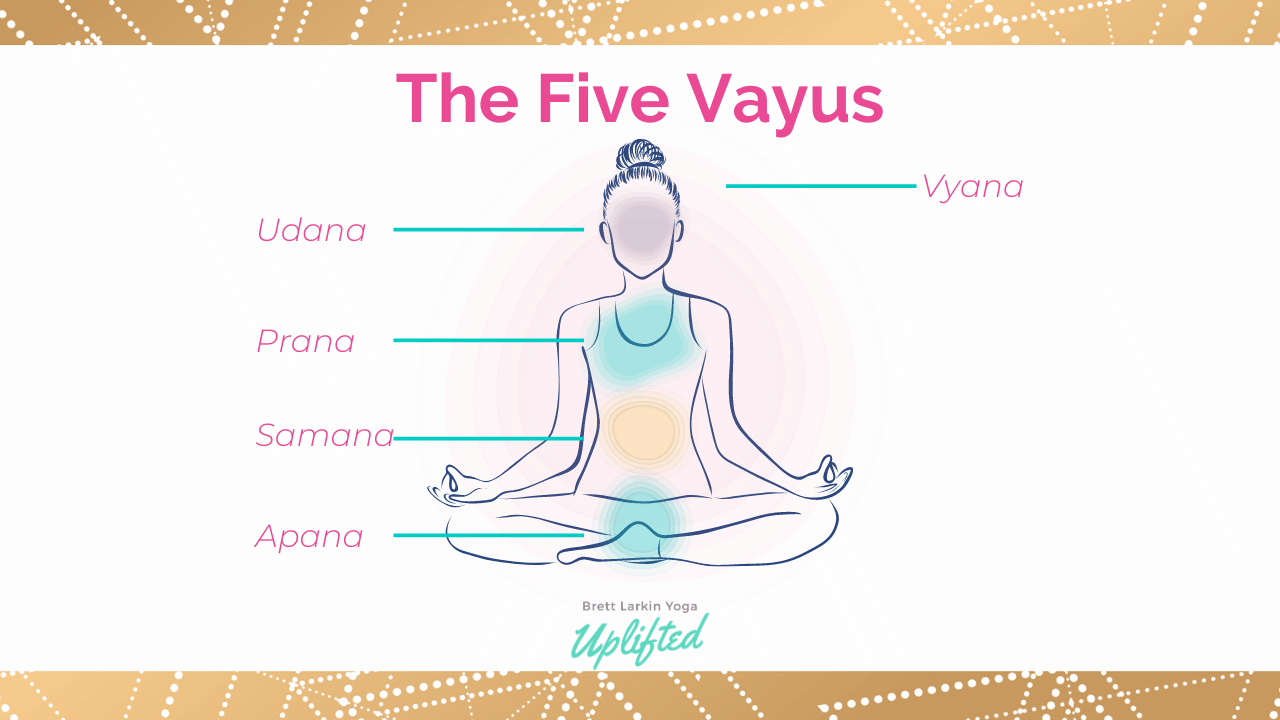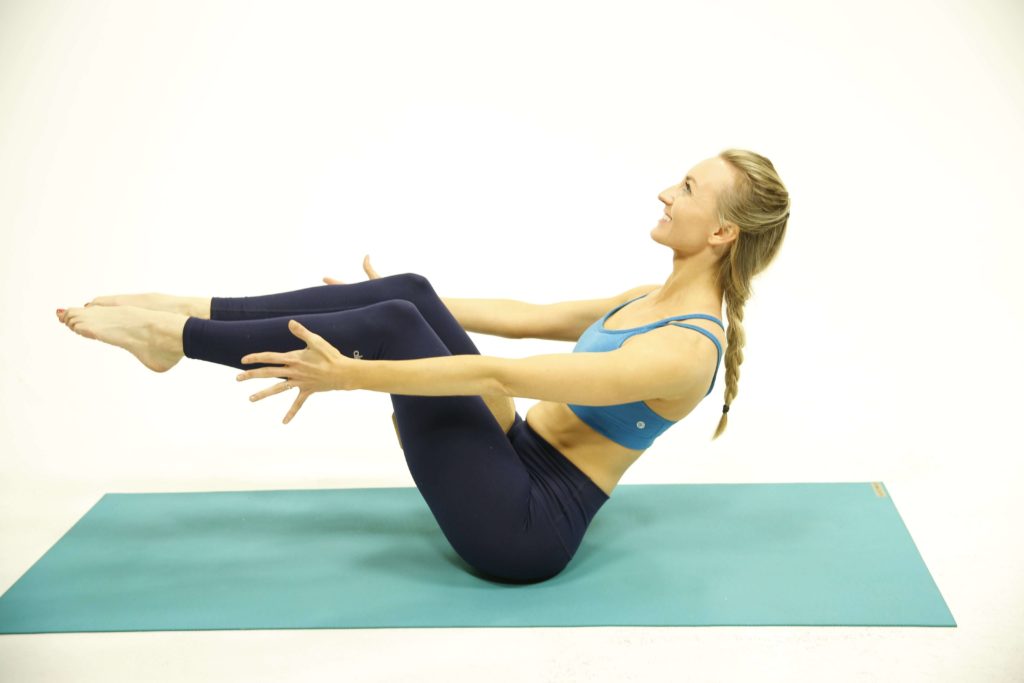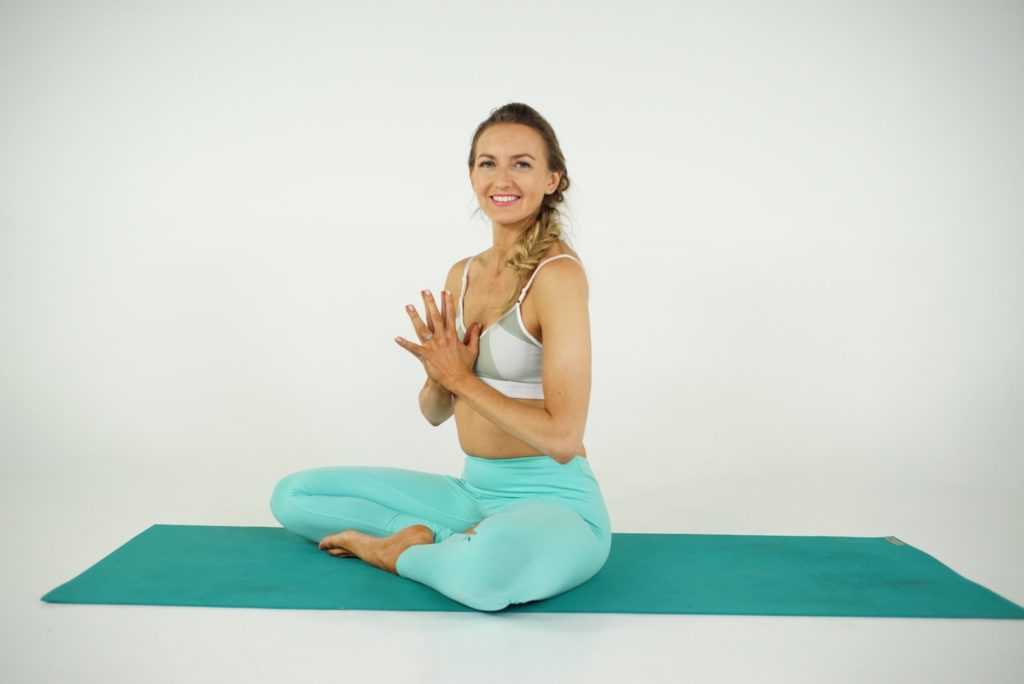One very powerful aspect of yoga is the study of the five winds, or prana vayus. We’ve talked in-depth on the vayus before, and today we’ll dive into Samana Vayu. The vayus are a lesser-known energetic element of yoga. Whether you’re a teacher or student, understanding the vital winds will help you to sequence your own practice with greater awareness and skill.
Samana Vayu governs the energetic flow of absorption and balance in our being. Let’s take a look at how this prana vayu functions.
Samana Vayu Is Your Equalizing Energy

Samana Vayu governs the consolidation of energy, or prana, in the center of the body. And what is prana? Quick reminder for yogis who need a brush up: prana is our subtle body energy, or inner life force. Everything we do in our yoga practice has an effect on our prana. Traditional yogic studies have identified five dominant movements of prana in the body, and Samana Vayu is one of them.
The five prana vayus are explained in-depth in traditional yoga texts like The Hatha Yoga Pradipika. Though they may seem confusing at first, working with these powerful energies will bring balance and depth to your practice.
Samana Vayu is the center for energetic processing. The main power of this vayu is processing and collecting energy so that it can be used efficiently. This energetic process controls the assimilation of all energies into the body, from food to breath, intellectual stimulation to emotional signals and sensory perceptions.
Meaning of Samana Vayu
Samana is a Sanskrit term that most often translates to “the same” or “equal,” while vayu means “breath” or “air.” The vayus are often expressed through the breath, which is seen as the most powerful energy source in yoga. Because of this, the Vayus are often translated to mean different movements of air through the body.
Some common translations of Samana Vayu are:
- The middle breath
- The balancing air
- The energy that centralizes
- The energy that balances
Samana Vayu Location in the Body
Samana Vayu is primarily active in the navel center. Because of its location and its association with the fire element, it is also closely tied to the manipura chakra or solar plexus. This is the energy behind our digestive fire, and brings vitality to the digestive organs and the rest of the body.
The location of Samana Vayu is especially important because it rests in the middle ground between prana vayu in the chest and apana vayu in the pelvic floor.

Movement Pattern of Samana Vayu
All vayus travel along what is known as the sushumna nadi. This is the central axis for subtle body movement and transmission. The sushumna nadi aligns very closely with the anatomical spine, and is the central column through which energy flows as it circulates in the chakras. So, yes, v important friends!
The energy flow of Samana Vayu is unique because it’s the meeting point between two primary vayus. It is the consolidation of the upward movement of prana vayu and the downward movement of apana vayu. Connecting to Samana Vayu gives us a sense of balance, groundedness and integration in our asana practice, meditation and life.
Integrating the flow of prana through Samana Vayu brings an abundance of physical and mental health benefits, too!
Why Study Samana Vayu
Samana Vayu helps not only to strengthen the body through core integration, but can also balance the mind. When we make an effort to manage our energy evenly, even just by reading an article about the principles behind balance, we will acknowledge the ways in which we may be scattered, ill-at-ease in our being, or lacking connection to our environment.
Physically, Samana Vayu is present in the digestive fire that turns our food into energy, so it’s always a good idea to check in with how your tummy feels if you want to connect with your Samana Vayu. What you do with this awareness is up to, of course! Below, I’ll offer some practices that I’ve found lead to greater ease, clarity and grounded-ness.
Common Signs of Imbalance in Samana Vayu
Generally, imbalances in samana sayu manifest as problems with regulation and energetic assimilation. But, of course, both of these can take different forms. Here are a few:
- Trouble assimilating. If you find change difficult, this could mean your Samana Vayu is weakened.
- Slow metabolism. This is a sign of slow-moving or incomplete digestion, which is associated with an imbalance of Samana Vayu.
- Malnourishment. As noted, strong digestion is a big indicator of Samana Vayu health. If your body isn’t absorbing the nutrients it needs, your entire energetic system goes into survival mode. Not good!
Treatment of Imbalance in Samana Vayu
To balance any of these symptoms, yogis must focus on the consolidation and balance of prana through movement and breath. As Samana Vayu mediates incoming Prana and outgoing Apana Vayu, treating imbalances in the middle wind involves steadying and holding practices.
Balance through Yoga Asana
Through our entire yoga asana practice we’re balancing dual energies. For the energy of Samana, focusing on asanas that stimulate the abdominal organs and the lower abdomen are powerful. Poses like Utkatasana (chair pose), Navasana, Marichyasana and Paschimottanasana would activate Samana.

In all of these postures, focus on deep-belly breathing deeply and utilizing the lower abdominals. If you’re familiar with the practice of Uddiyana Bandha, you can utilize that as well.
Balance Through Pranayama
Samavritti, or equalizing breath, is one of the oldest known pranayamas in yoga! This simple, meditative breath balances length of inhales and exhales.

- Start by simply noticing the breath, letting it flow naturally.
- When you’re ready, begin to breathe deeper and match the length of your inhales and exhales.
- Let your awareness rest on the slight pause of breath at the top of your inhalation, and at the very bottom of your exhalation. This is the seat of balance. This is the energy of Samana.
Samana Mudra
This mudra is a great addition to a seated meditation, and can work to subtly regulate Samana in the body. In Samana mudra, all four fingers are brought to touch the thumb in the center of the hand. This represents the balance of the five elements of Ayurveda meeting together in harmony.
Next Steps
- Check out my YouTube channel and find some yoga classes that you can try out for yourself!
- Download my Yoga Calendars for an at-home practice, guided by me on YouTube!
- Join Uplifted for exclusive content that you can access right from the app. Take a deep dive into your practice with me this year!
Experience 3 Training Videos from Inside My 200-Hour Online YTT











